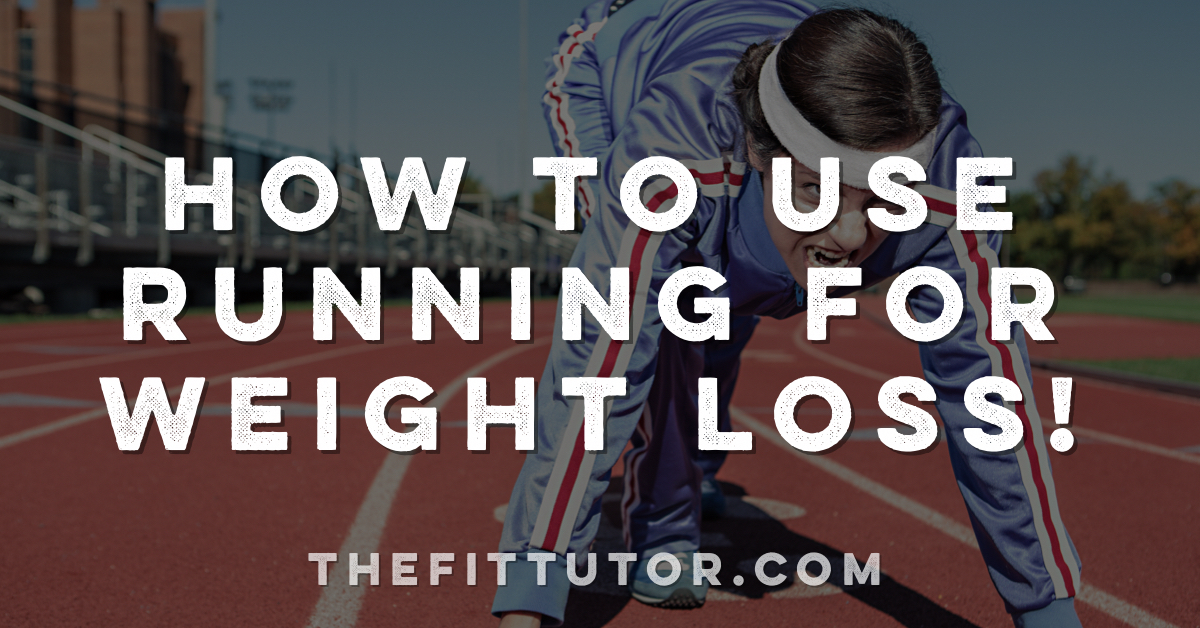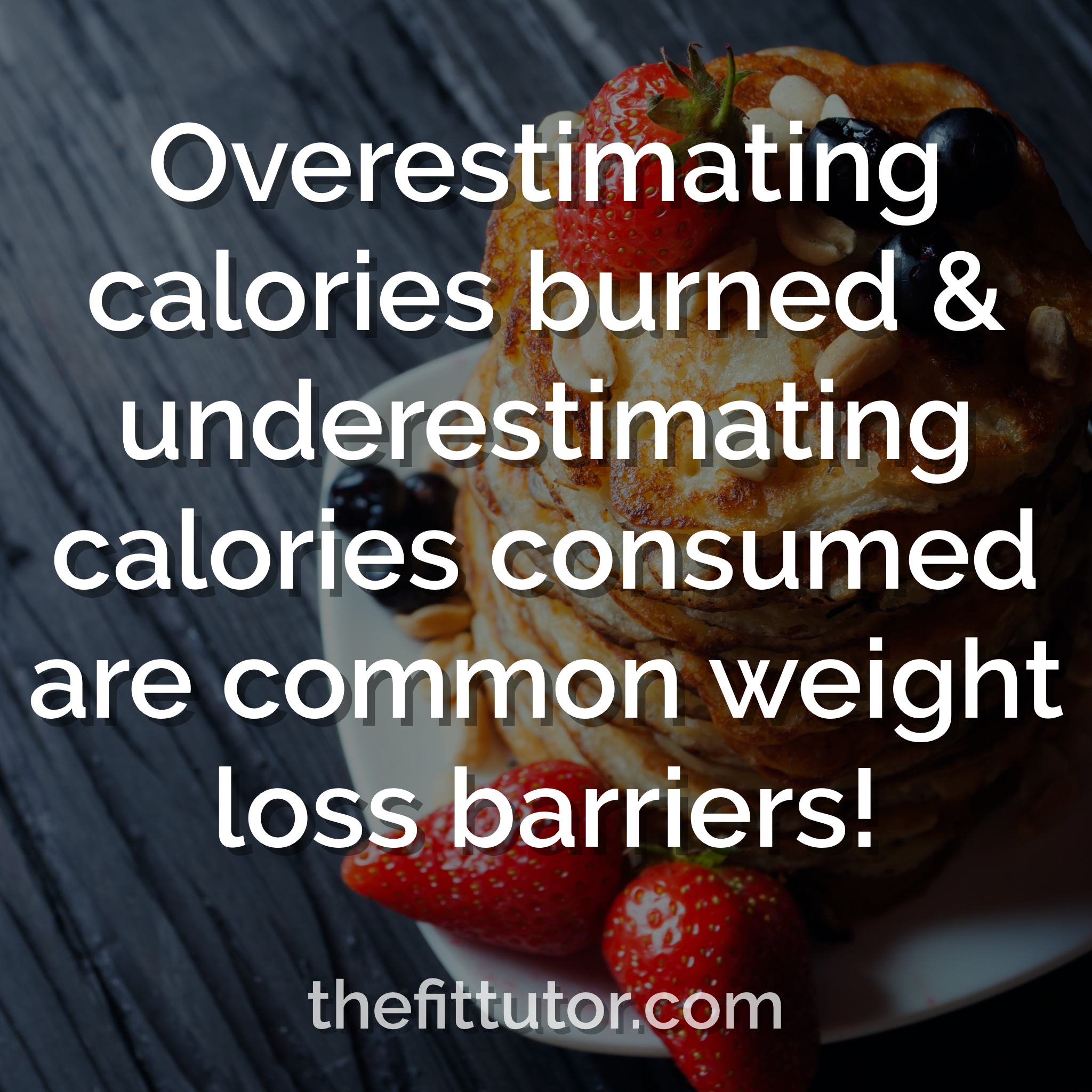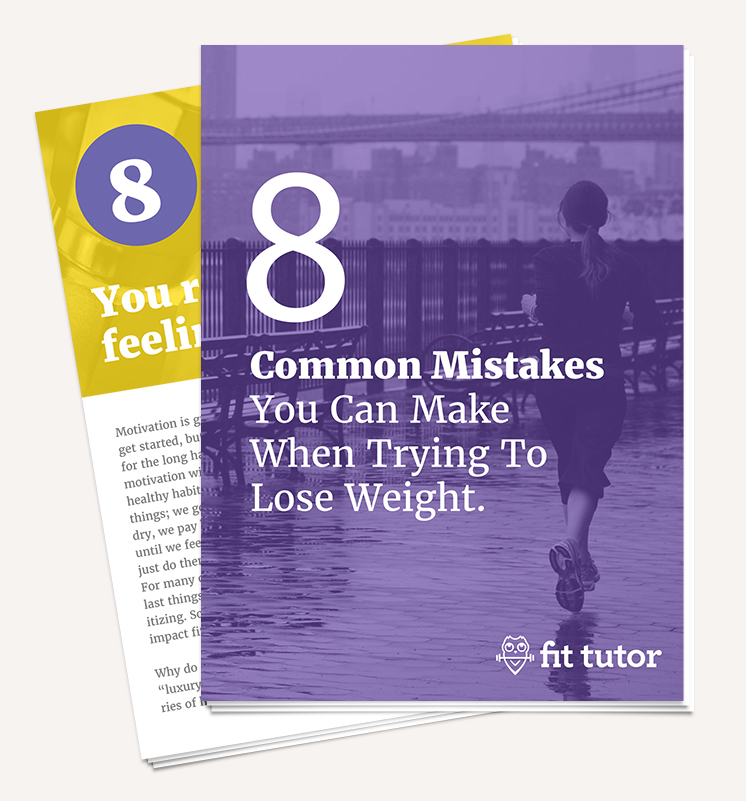Running is an excellent way to burn calories, get in great shape, and reach your weight loss goals! Unfortunately, running for weight loss isn’t as easy and black and white as one might hope. Many have not gotten the results they wanted by running and some have even gained weight! This post will help you figure out what to do and what not to do to be successful in using running for weight loss!
Why Running is an Effective Way to Lose Weight
Running is a tried-and-true way to burn calories, increase your metabolism, and help you achieve the calorie deficit needed to shed extra pounds. Running is good for your metabolism because it can build, and at the very least help preserve, muscle which is crucial for fat loss. This helps to ensure the weight you lose is fat and not muscle. Depending on the length and speed of your run, you can experience Excess Post Oxygen Consumption (affectionately known as EPOC) which means you’re burning calories even after your run is over.
Running can be cheap, convenient, and efficient, which makes it a great weight loss tool. Contrary to popular belief, running isn’t hard on your joints if you use proper form and don’t have any previous injuries to worry about.
It also burns more calories than swimming, biking, and walking when going the same distance. And no one’s complaining about the endorphin rush and feelings of complete badassery that follow a hard run! There’s been some negative press lately about running’s relationship with weight loss, and I’m here to help you figure out fact from fiction and use this favorite past time to your advantage!
If Running for Weight Loss is so Great, Why Haven’t I Seen Better Results?
Here are some common ways you may be sabotaging your hard work:
You are Overeating
No one likes to hear this, especially when you feel like you earned those extra calories after that grueling run yesterday. Although weight loss can be more complicated than this, we still need to decrease calories to shed pounds. You can do this via burning more or consuming less.
Your body strives to maintain homeostasis. As you burn calories with running, your body will increase your hunger to help maintain the balance it craves. This is one reason why some people actually gain weight with running – they feel hungry all the time and consume even more calories than they burn.
It’s common to overestimate your calorie burn during your workout. You feel exhausted and you sweat enough to fill up an Olympic sized pool. It’s easy to assume you can scarf down a combo #1 from In and Out Burger and wake up with a flat stomach. This overestimation can lead us to feel like we “earned” or “deserved” splurges that move us further from our goals.
If you’re consuming tons of gatorade or carbohydrate-rich sports gels but not running enough to really need them, then there’s a potential reason you’re not losing weight. Those have calories (and sometimes unhealthy chemicals) that aren’t taking you in the direction you were hoping to go. (I recommend this gatorade alternative)
What You Can Do Instead
There are several options to help keep you from overeating; choose one that sounds like it’s doable for you!
Nutritional Suggestions
To help keep you realistic about your diet and calories burned, you can use a heart rate monitor or a fitness tracker to help you get a more accurate assessment. You can also try this nifty calories burned calculator! A food log– hand written or digital like My Fitness Pal- can help you be more realistic about how much you’re eating. This can help you tweak your diet for weight loss and is a great accountability tool.
If you’re cutting calories along with running for weight loss, make sure you decrease them gradually. Doing this slowly will help you lose weight while staying fueled for your runs and keep you from feeling hangry. If you cut a large amount of calories at once while upping your workouts, you could be headed towards a plateau.
You can space out your snacks and meals to keep you from feeling (too) hungry. This can help you have energy for your runs as well as the nutrients needed for recovery! Eat enough at each meal so you’re not hungry until about 3 hours later, and plan ahead to have a healthy, nutritious snack around hour 3. Consume about 150 calories, mainly protein, after longer, intense runs. Portion control can help any struggling diet! Spacing out your meals helps prevent hunger and cravings which can stop you from overdoing it after a run.
Planning and Accountability
Have a plan! Having a plan can help keep your portions in check and splurges under your control. Prep food so you always have something healthy to grab when you’re hungry. Plan out meals in advance and set a date to have your groceries in hand. I struggle with full-week meal plans and prep, so I opt for 3-4 days at a time. Find what works for you, but it’s hard to lose weight by “winging it.”
Finally, set a cap on splurges or recruit someone to help keep you accountable. Maybe you need to set a limit and stick to it, or use cheat meals or splurges after reaching a certain goal. Whatever works for your personality, keep consumption of junk foods, fast food, sweets, and things sent from heaven like unlimited chips and salsa to a minimum to help you reach your goals!
You’re Not Running Enough
Running a few times per week might not be enough to reach that coveted calorie deficit. This goes hand in hand with overestimating your calorie burn. You think you’re working really hard (and I have no doubt that you are!) but you’re not burning enough calories to see results. You theoretically need to burn or cut 500 calories per day to lose 1 pound per week. I wouldn’t recommend starting there, but this is still basic calorie math although it’s not always so cut and dry.
What You Can Do Instead
First off, don’t allow discouragement to sink in. Your 1 milers can still make a great difference with your weight loss goals if you follow the suggestions in this article, and they are working wonders for your cardiovascular health! Keep going!
The obvious answer here is “run more,” but strength and lung capacity aren’t gained overnight. So keep your head high even if you don’t drop a dress size after 3 runs like your friend did. Increase your distance/time gradually to help prevent overtraining- increase no more than 10% distance per week. This will help keep you injury-free and you’ll consistently provide your body with a new challenge!
Finally, add some variety to your runs! Use the walk/run method to help improve your distance and endurance. If you’re short on time or good weather, perform High Intensity Interval Training (HIIT) at home. Mix that with strength training and you’ll get the metabolism boost you need to burn more calories while you’re working to become a better runner!
You Run the Same Path and Same Speed Every Time
Friend, your body is amazing! That being said, it’s ridiculously efficient, and when you run the same pace and distance every time it will burn less calories. Your body is designed to save energy and work more efficiently, which as cool as that probably was for our ancestors, it’s a total Debbie downer for your weight loss goals.
And it’s just as bad if you go 110% every run. As noble as this hard work seems, it can elevate your stress hormones which can slow down your weight loss.
What You Can Do Instead
Mix it up, yo! Is there a different trail or path you can run? Can you run it in the opposite direction? Make it longer or run it twice? If not, changing up your pace is something you can do while still rocking your favorite (or only) running path!
Adding intervals to your workout is a great way to keep your metabolism up and your body burning as many calories as possible. You can start out with walk-run intervals and increase to jogging or running intervals. They can be as short or as long as you want them to be.
Always keep the mix-it-up rule in mind, though so you don’t get in a rut with your intervals. Keep changing every other week or so! And don’t feel like you can only do intervals- these are a part of a balances running regimen. Add in some fat-burning zone runs, some fast interval days, some slower and longer interval days – just don’t keep running the same distance and speed every time.
- If you’re a Fit Tutor member, check out these intervals to get you started!
If training hard core each time is your thing, mix up your routine. Schedule in your hard, challenging runs, but follow them up with an easier run. You’ll recover better and get more out of your intense days!
You’re Only Running
I’m sure by now you’re mumbling curse words under your breath at all the “rules.” The truth can set you free, but first it makes you mad, right? Push through with me so you can get better results from your hard work!
We all know someone who started running a few times a week and quickly lost 20 pounds. We are so excited for them (but also secretly hate them). And for some people, that can be enough to lose weight. But for the rest of us, we need something else.
In this case, we’re talking again about the whole body-adjusting-and-burning-less-calories thing, and the potential for your metabolism to slow because of the repetition and stress on your body. Running should be supplemented with some type of strength work. The repetitive movements can neglect certain muscles and create imbalances which can lead to injury. People just starting out can benefit greatly from training variety while their muscles and joints get used to their new running routine, and seasoned runners can stay on top of their game and improve their performance with strength work!
What You Can Do Instead
A balanced running regimen would include yoga, some foam rolling, and strength training. Chances are, since you landed on my site, you’re a busy women who just wants to shed some pounds. If that’s you, your best bet is to add strength training into your routine!
Let’s briefly clear the air here- you don’t need a gym or heavy barbells, and you shouldn’t stress about bulking up. Strength training can greatly improve your running, so don’t worry about large leg muscles slowing you down or anything like that!
Strength Training
The reality is, strength training can give you the metabolism boost you’re looking for, help speed up your weight loss, and improve your posture and correct muscular imbalances common in runners! More muscle equals higher metabolism, and strength training can do awesome things like increase bone density and even confidence! ;)
I recommend some HIIT mixed with strength training. You can use dumbbells, bands, or bodyweight. You don’t need a gym- you can do it all at home, before a run or alternating strength and cardio days in your schedule. I’ve done a few posts about this already for running month, so you’ll want to check these out as you get started!
- 10 Strength Exercises Every Runner Should be Doing
- The Best Glute Exercises For Runners
- Weight Lifting for Runners
You’re Not Properly Recovering
This could be due to a number of factors, but is always a setback from your goals. Your body needs rest to rebuild and repair your muscles after running. If muscles broken down don’t get a chance to repair, then they don’t help with your weight loss.
You may be guilty of this if you’re training too often, not incorporating easier runs into your routine, or avoiding active recovery like yoga or foam rolling. Rest and recovery help to decrease the stress hormones in your body that, if they stay elevated, can damage metabolism and lend to weight gain.
What To Do Instead
Add active rest and recovery to your routine: foam rolling, yoga for runners, rest days, and easier runs all have a place in a healthy workout routine that promotes weight loss. More is not always better because you’re human, and your body needs to repair itself after tough workouts or a series of back-to-back workout days.
Stay hydrated! You might see signs of overtraining because your body isn’t getting enough water. If it’s hot or you sweat a lot during your workout, drink more water! Shoot for 8 glasses per day plus an added 6-8 oz for every 15-30 minutes you run.
Nutrition for Recovery
Some earlier advice, like balancing and spacing out your meals and snacks, can help ensure your body has what it needs to recover. You can try adding a post-workout snack, like greek yogurt, a protein shake, or some of the options mention in this post, but keep it to around 150 calories.
It could be your pre-workout snack that needs adjusting, so try eating something easily digestible about 30 minutes prior to your run (you can check out ideas here and here). I mostly see people overeating due to “earning” treats, but I still see plenty who are cutting calories too much and too quickly and aren’t giving their bodies what they need for fuel.
For some people, tracking the amount of protein, carbs, and fat you’re eating can help pinpoint an area of nutritional weakness in your diet. Many women don’t get enough protein. If you suspect that’s you, you can log your food and see how many grams of protein you’re getting. Maybe you’re not eating enough carbs to refuel after a workout. Carbs aren’t evil, but too many can slow down weight loss. It can be a challenge to find that balance, but it’s doable, and tracking can help you get a realistic view of your diet.
You’re Relying Too Much on the Scale
Your body is changing because of your new exercise routine, but yet you’re still discouraged because the scale isn’t moving. This added stress can actually hinder your goals!
What To Do Instead
Find other ways to measure success. If you’re going from couch to 5k, you better believe you’re gaining some muscle while losing fat. Track your progress other ways while still hopping on the scale every few days or once a week. Inches may be coming off, your legs may look stronger, your stomach might seem flatter, but you’re still at the same weight. Track your progress with photos, measurements, and trying on your favorite dress or skinny jeans weekly or bi-weekly to give you a better indicator of your success!
The Bottom Line Is… Summary of How to use Running for Weight Loss
Here’s a recap of the most important takeaways:
Keep your diet in check. A calorie deficit is needed to lose weight, and can be achieved either by increasing exercise or decreasing calories. Choose one to start with, and do so gradually. Add in the other later.
We covered that your body is a ninja at adapting, so adding variety to your routine will help you achieve weight loss. You can add variety by changing the pace and distance of your runs, and adding in intervals and HIIT. Strength training is important for increasing metabolism, speeding up weight loss, and keeping your body injury-free and balanced.
Lastly, listen to your body! Give it the nutrients it needs when it needs them, stretch, rest when needed, and commit to achieving weight loss the healthy way.
What in this article resonates with you? Go ahead and start with one at a time. Slow changes are sustainable, and gradual weight loss is more likely to stay off!
This month is Running Month here at The Fit Tutor! I’ve created 5 workouts designed just for runners to help improve running, increase weight loss, and correct imbalances! If this stuff seems overwhelming to you, sign up for a Fit Tutor Membership and take one less thing off your plate. All you have to do is follow along with the running month workouts or any of our workout programs. Check out the options here:
Share in the comments which one of these is your biggest struggle, and what you’re going to do about it! ;)






Comments are closed.